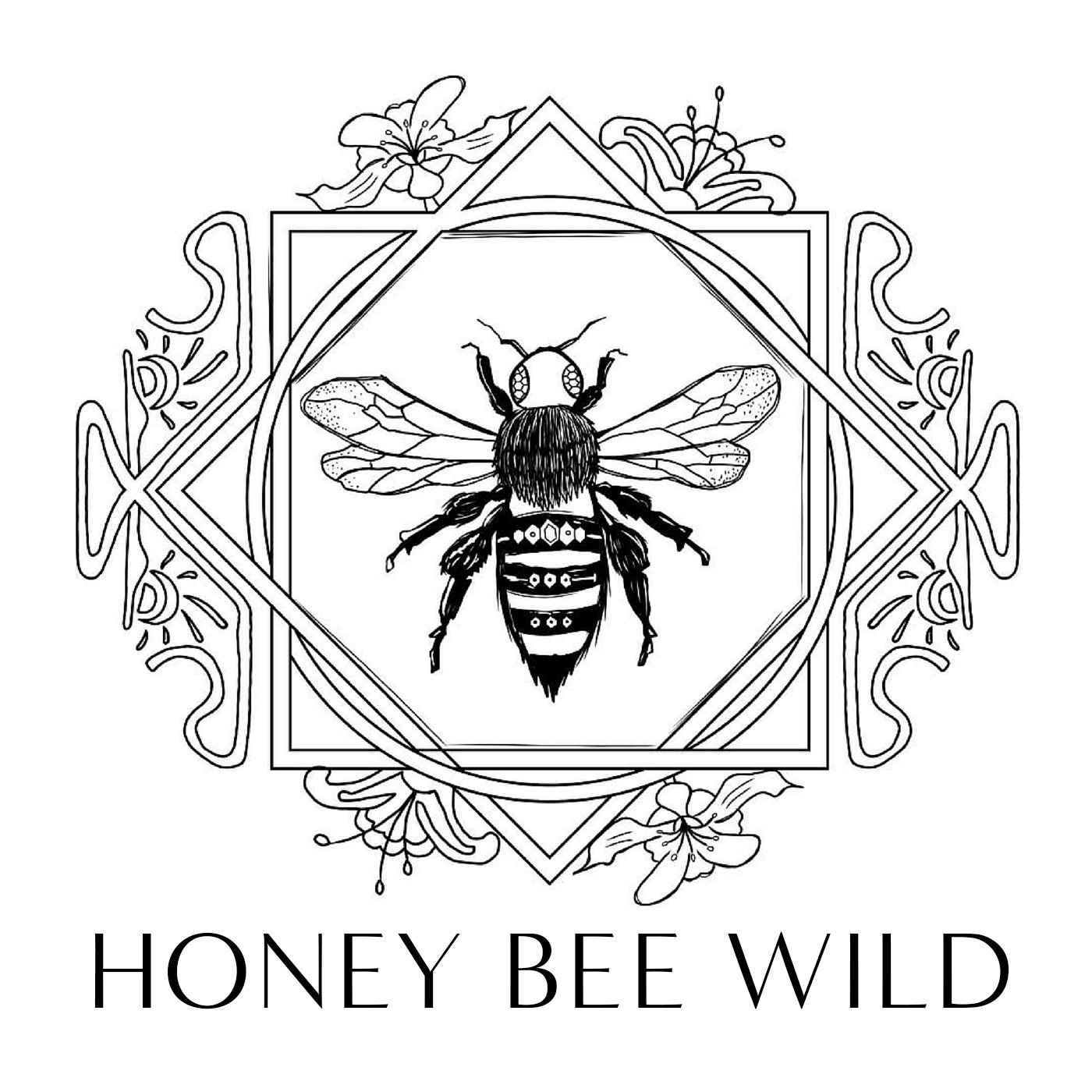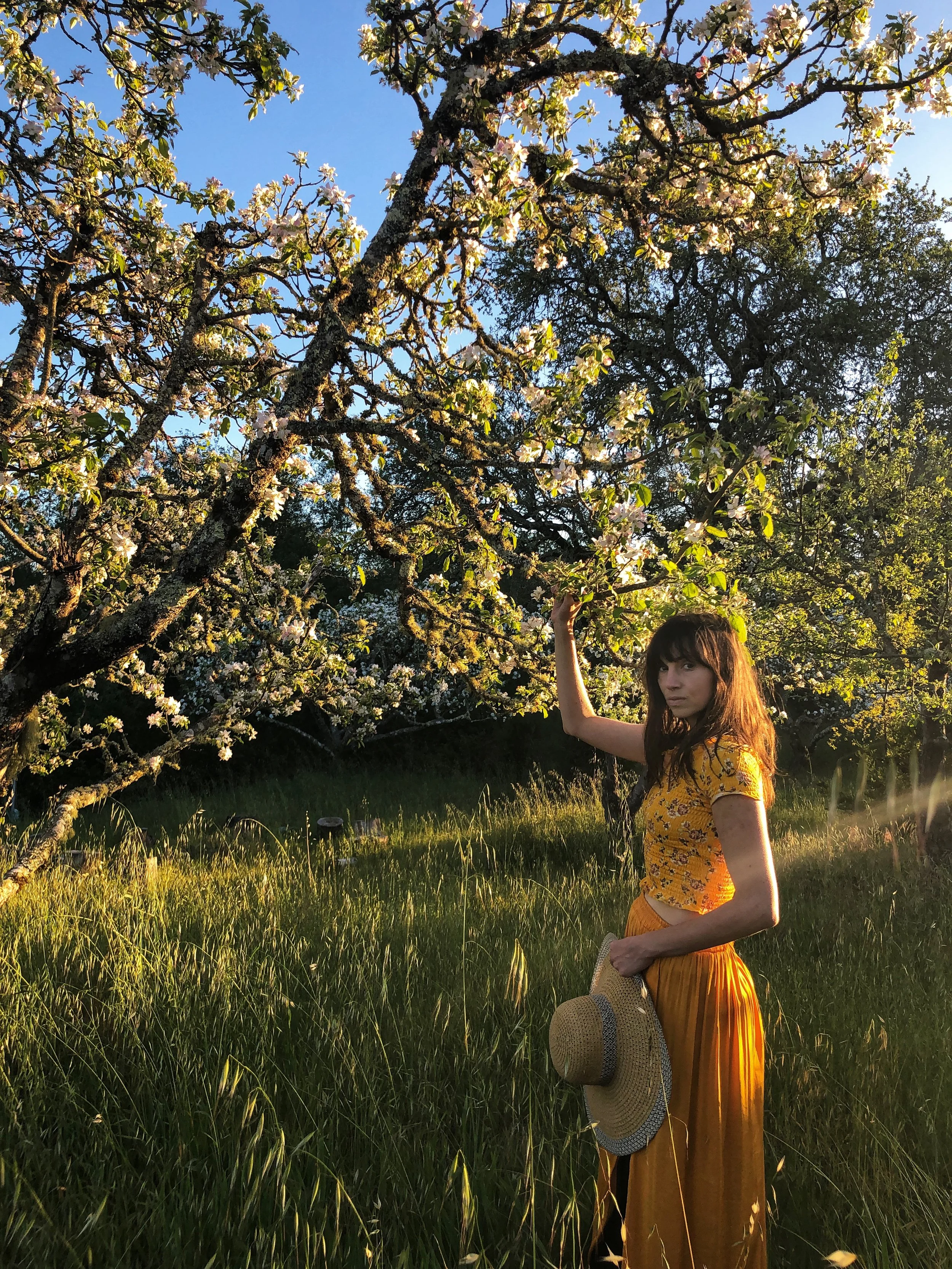8th Day of Yuletide: Sing to the Trees
I grew up in a town that was small enough to still have Christmas carolling. I used to love going from house to house singing tunes. We gathered before a house and sang until the owners opened the door. Sometimes they ignored us, but sometimes they would join in. If I had been doing this a few centuries back, perhaps the owners would have offered treats, money or gifts. Or, perhaps we wouldn’t have been singing to homeowners at all; we would have been singing to the trees.
Christmas carolling, in the old sense of going from door to door and singing, has roots in Wassailing. As in: “Here we go a-wassailing among the leaves so green…” Wassail is a drink and a folk tradition celebrated during the twelve nights of Christmas, or in early January. The word comes from Anglo Saxon “vesheil” meaning “be well” or “be whole”. As a drink, it is typically made from a spiced wine/ale or cider and sometimes an egg. In medieval England, where abundant apple orchards grew, and livelihoods depended on a bountiful harvest, folk would go down to the orchards with a large bowl of hot, spiced wassail.
I grew up in a town that was small enough to still have Christmas carolling. I used to love going from house to house singing tunes. We gathered before a house and sang until the owners opened the door. Sometimes they ignored us, but sometimes they would join in. If I had been doing this a few centuries back, perhaps the owners would have offered treats, money or gifts. Or, perhaps we wouldn’t have been singing to homeowners at all; we would have been singing to the trees.
Christmas carolling, in the old sense of going from door to door and singing, has roots in Wassailing. As in: “Here we go a-wassailing among the leaves so green…” Wassail is a drink and a folk tradition celebrated during the twelve nights of Christmas, or in early January. The word comes from Anglo Saxon “vesheil” meaning “be well” or “be whole”. As a drink, it is typically made from a spiced wine/ale or cider and sometimes an egg. In medieval England, where abundant apple orchards grew, and livelihoods depended on a bountiful harvest, folk would go down to the orchards with a large bowl of hot, spiced wassail. Often they dressed colourfully, wore feathers in their hats and even performed masked plays. Songs were sung to the trees while wassail was sprinkled over the branches. The bowl of wassail was also shared among revellers, and at the end, the villagers went to the largest tree in the orchard and poured the remaining wassail into its roots. Toast soaked in cider or beer was placed in the forks of the tree. Ever wonder where the term “toast” while drinking came from? Now you know. All this was done with the intention to wake the spirit of the trees and ward off an evil spirit that may harm the harvest.
Wassailing has recently made a comeback in parts of England and the US! You can go sing to the trees one of these winter nights. It doesn’t have to be an apple tree. Any fruit tree will do. Just remember to bring a piping thermos of spiced wassail and offer some to the spirit of the tree. Be well!
Photo cred: 1) public domain 2) @deans_court 3) @cornwalllive 4) @westerncider
Apple: Fruit of the Otherworld
It’s apple season here in Sebastopol. I grew up in a land of cedars and pine, but moved to the soft, apple hills of this small town, which used to be the Gravenstein capital of the world. Some of the old orchards have resisted the encroaching vineyards and every spring they are ablaze with white blossoms and memories of Avalon.
Apple
æppel • aball • malum
Main Pollinators:
Honey bees, mason bees (but there are many more!)
It’s apple season here in Sebastopol. I grew up in a land of cedars and pine, but moved to the soft, apple hills of this small town, which used to be the Gravenstein capital of the world. Some of the old orchards have resisted the encroaching vineyards and every spring they are ablaze with white blossoms and memories of Avalon. This time of year the apples fall faster than we can pick them. Yesterday I saw two white-spotted fauns in the middle of an orchard enjoying the free harvest while mama looked on. Apple harvest is always a good time of year. It means love it in the air. Always has, always will.
The apple we know today is originally from Central Asia, but has been cultivated in Europe and Asia for thousands of years. In Ireland and Britain, there is a smaller, native apple known as crab apple, or to the Celts, wild apple. In Scotland, Wales and Ireland, you can still find windblown, twisted apple trees with ribbons and cloth tied to the branches . These trees are called Clootie trees and are a form of prayer tree. Two of the most common Clootie trees are Hawthorne and Apple, both associated with love and the Otherworld.
Apples are Faye food. Forbidden fruit. Fruit of the dead. Love fruit. Witches fruit. They hang heavy off the many-branched tree of folklore. After all, wasn’t it our courageous Eve who first tasted their promise of Gnosis (although let’s be honest, her apple was most likely a pomegranate).
It was apple, gifted by the Goddess Iðunn who gave the Norse gods eternal youth. In Ancient Greece, apple was the fruit most beloved to Hera, Athena and above all, Aphrodite, goddess of Love. It is not surprise that Apple was associated with youthfulness, love and fertility. It’s health benefits are many and varied, but they are particularly known to prolong life through aiding in digestion, liver function as well being a good source for vitamin C, B6, and potassium.
My favorite apple myths spring from Celtic mythology. In Irish folklore, the Wild Apple was a sacred chieftain tree, and to cut it down without permission engendered a hefty penalty. It was often associated with the Otherworld and apples were commonly found buried with the dead. The Otherworld however, is more than the place of the dead, it also represents the land of the Faye folk, who were said to live in the hollow hills, the trees and in the sacred isles beyond the ninth wave.
In one Irish myth, a Sidhe, or fey maiden falls in love with a mortal and sings her love to him. She is chased off by his father’s men, but before she departs, she throws him an apple. The apple is fairy food and is ever-renewing. The fruit alone sustains the mortal for a year, until she returns on her crystal ship and they sail to the Otherworld together.
In another Irish myth, through trickery, two lovers are kept apart and die. On the grave of the maiden an apple tree grows. On her lover’s grave, many miles away, a Yew tree sprouts. The trees grow and bend longingly toward on another for seven year. Then the trees are cut down by bards and all the stories of love and romance that ever fell from lips were carved upon wooden tablets made from the trees. Eventually these tablets found their way to the hands of the high king of Tara. When the love tablets were side by side, they sprang into each others arms, becoming as deeply entwined as the branches of an ancient tree.
I wrote a song once called Apple Tree, about loving and letting go, inspired by the Celtic lore. You can listen to it here.
In Arthurian myth, the Isle of Apples is another name for Avalon: the land lost in the mists. When Arthur is mortally wounded, his half-Faye sister, Morgan le Fey, ushers him on her boat to the Isle of Apples, a place of eternal summer, where Arthur sleeps until it is time for him to wake and return to the world of man. Today that isle is associated with Glastonbury Tor in England, where the veil between the world is quite thin. This photo is from the apple orchard on the side of that famous fairy mount.
From stories such as these, and many others, a myriad of folk traditions have arisen. In Britain and Ireland, to toss an apple to someone is a declaration of love. Similarly, to cut an apple crosswise, revealing the star, and then share it with another, is also an act of love. At harvest faire, around the the time of Samhain, young women would bob for apples. Once an apple was caught, the girl would peel the apple in one long ribbon and then toss the peel over her shoulder. The peels were then inspected to see if they made a letter, which was believed to be the first letter of the girl’s future husband.
Beyond romance, apples were also commonly associated with divination and magical folk. Druid’s divining rods were carved from Apple. Merlin himself was thought to practice his arts in a sacred apple grove. The trees were so important, that a long standing tradition of honoring them at midwinter arose. This tradition involved heading to the orchard on midwinter eve or Christmas eve. A tree was selected to represent the commonwealth of Apple trees and was then saluted and blessed with cider, cakes, song and poetry. This tradition is called Wassailing and is still practiced to this day.
Some of my favorite traditions that you can incorporate into your autumn harvest are:
Making apple cider vinegar and sprinkling it on an apple tree at midwinter
Baking apple crisps for your loved one, infused with cinnamon and clove
Collecting dried apple seeds in a small sachet and sleeping with them under your pillow for support in dreams of the otherworld
Leaving apple offering to the fey folks when the veil is thin at times such as Autumn equinox and All Hallows Eve.
Pelting your crush with apples, just to be sure they know you like them.
Leaving apples or apple seeds on your ancestral altar to honor the spirits who have journeyed to the underworld.
Happy Harvest!











